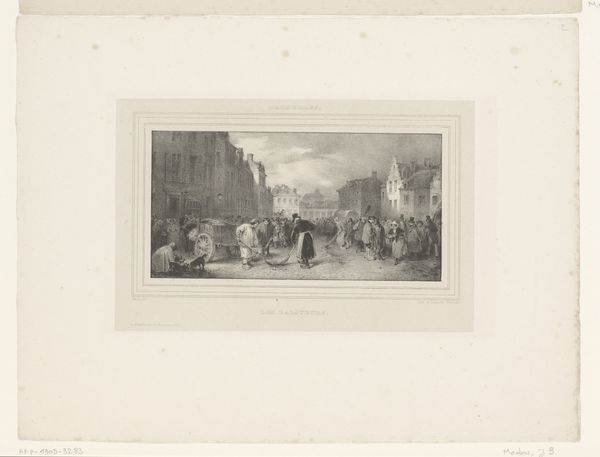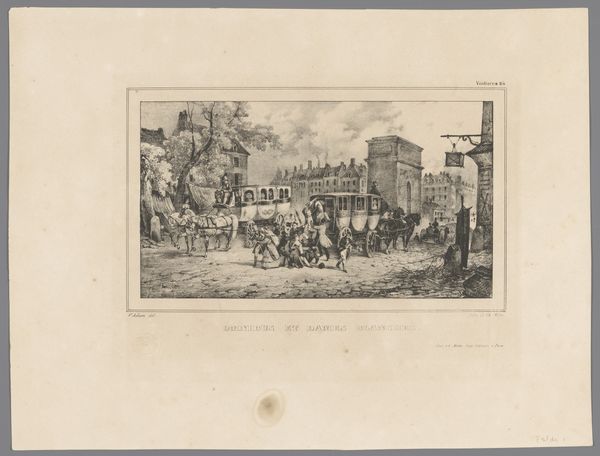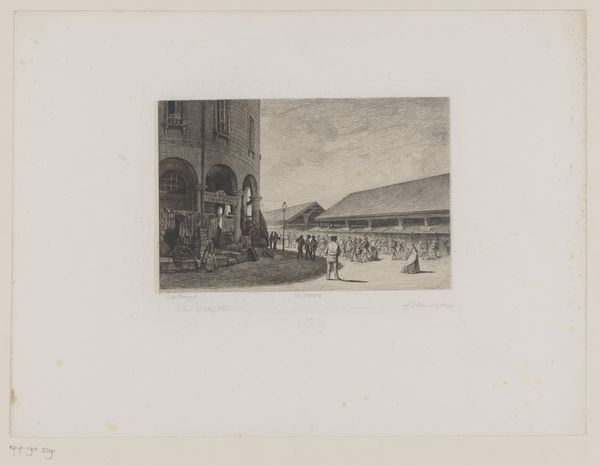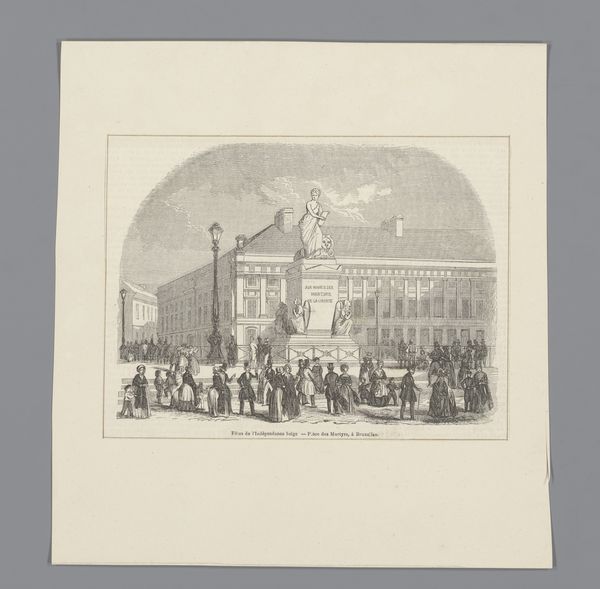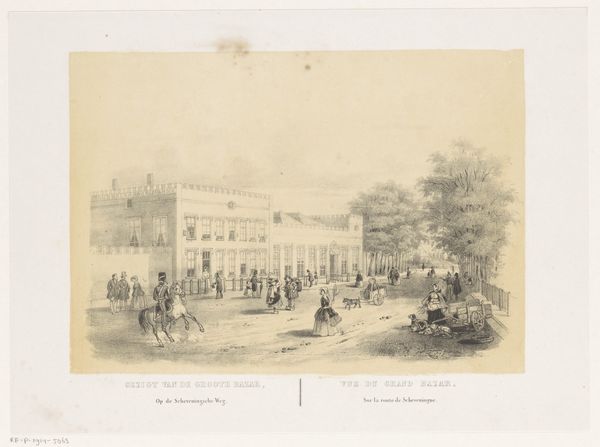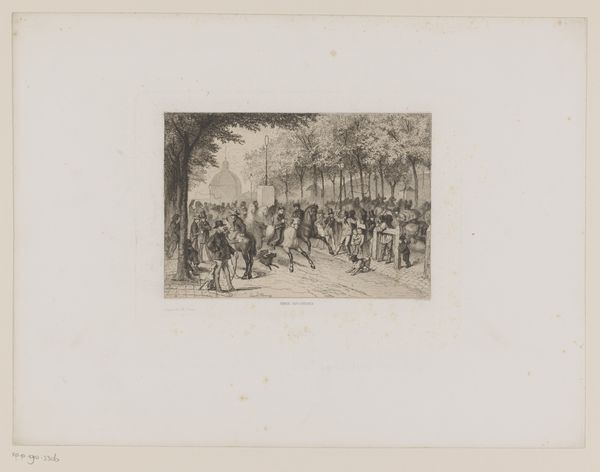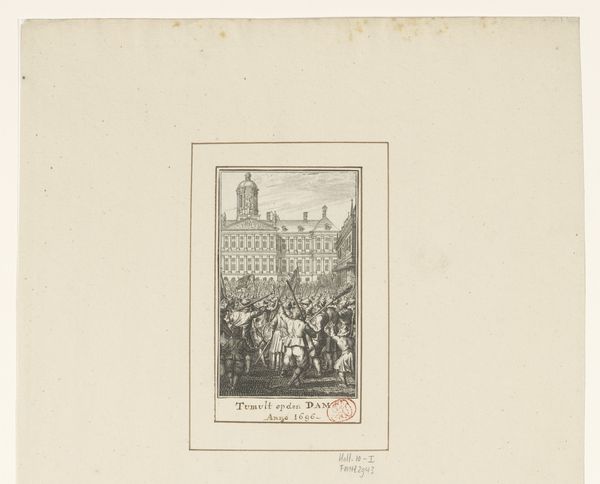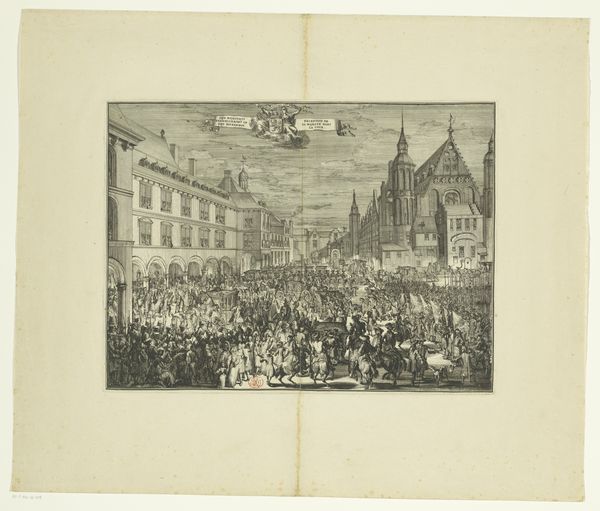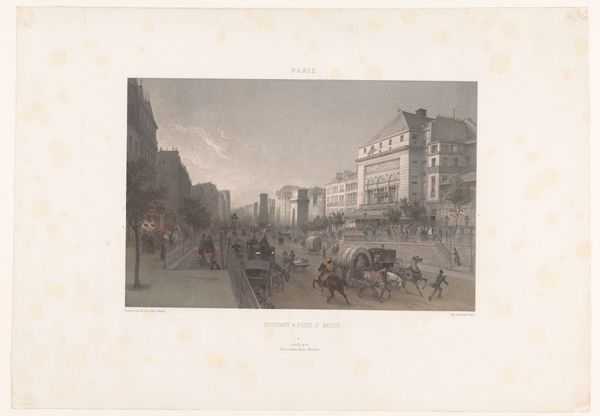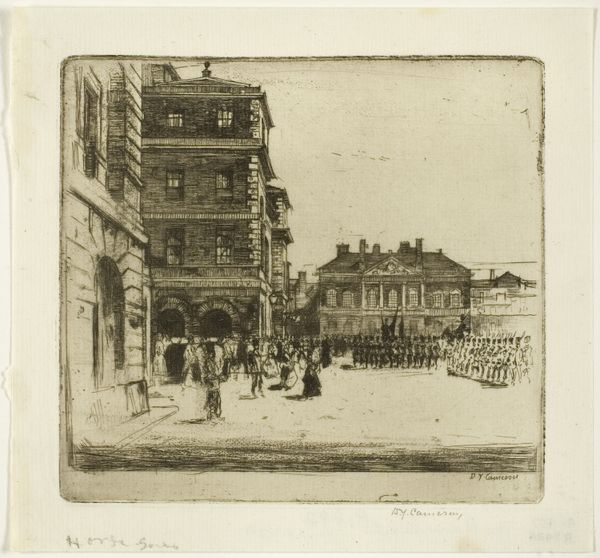
print, etching
# print
#
etching
#
cityscape
#
genre-painting
#
realism
Dimensions: height 148 mm, width 227 mm
Copyright: Rijks Museum: Open Domain
Curator: This is Léopold Flameng's "View of the Market around the Fontaine des Innocents in Paris," an etching dating back to around 1859-1860. Editor: It's fascinating; the dense composition is striking, evoking the very air of the bustling Parisian market. I notice immediately the light. Its softness spreads an almost sentimental veil across the quotidian details. Curator: Flameng expertly captures the dynamism of everyday life. The print’s historical importance lies in its meticulous documentation of a specific urban space and the social interactions unfolding within it. Consider how these prints circulated; bringing scenes of Paris to a wider audience. Editor: Agreed, and technically, the sharp, incisive lines build a world where form follows function beautifully. Note the precise detailing of the Fontaine des Innocents contrasted with the blurrier mass of the crowd; it's like looking into distinct realities superimposed on one another. There is structural tension between detail and suggestion here. Curator: Indeed, the crisp architectural renderings against the looser depiction of the crowd exemplify a certain Realist style common during the Second Empire. Think of how Haussmann’s urban renewal project was radically reshaping Paris, simultaneously modernizing it and displacing much of its traditional fabric. This piece captures a poignant moment in that transition. Editor: A transition reflected not only in subject matter but in its technique, then? Interesting. Speaking strictly formally though, what is accomplished with the distribution of weight on each side? To what extent is your reading dictated only by cultural conditions, and is my experience invalid because I responded to pure form? Curator: I understand your point about potentially imposing contextual biases; however, it seems impossible to discuss without acknowledging this period’s defining features, right? Editor: Perhaps. But even considering what you are saying, I still feel moved by its balanced chaos. Something both so specifically Parisian and universally representative of people coming together around necessities. Curator: An insightful and nuanced perspective that marries both the objective qualities of form and the inherent weight of history, ultimately enhancing our understanding of it. Editor: Leaving us with questions about permanence and fleeting impressions, not only about the work but about the space itself.
Comments
No comments
Be the first to comment and join the conversation on the ultimate creative platform.
